‘Palm Royale’, ‘The Crown’ & ‘The Gilded Age’ Costume Designers On Dressing For A Higher Social Standing
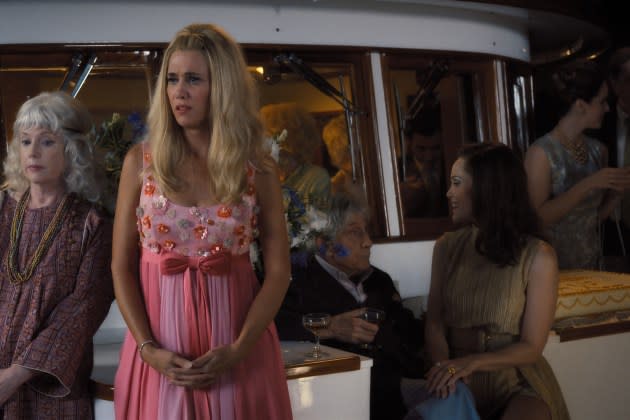
No matter how popular a clothing style may be in the world of high fashion, trends are made to come and go. This Emmy season has costume designers doing the work of interpreting those trends for a new era.
Palm Royale tracks the fashion of one woman trying to fit in with the high society of 1960s Palm Beach, where she seems to often just miss the mark. The Crown gives the Queen a bolder color palette and a look of defiance for one final send off. Taking cues from painters of the 1880s, The Gilded Age builds on a framework of fashion trends from multiple decades.
More from Deadline
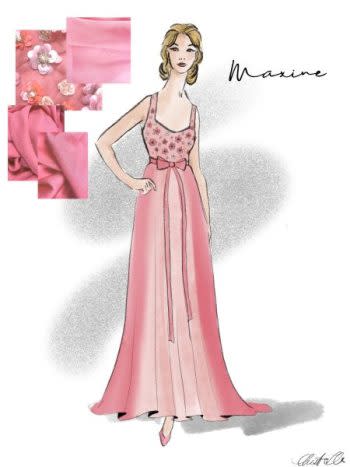
Palm Royale
For costume designer Alix Friedberg, Palm Royale presented a great opportunity to explore the innovative fashion of the time. “They call it the fashion revolution for a reason,” she says. “The late ’60s was a very flamboyant time, and there was a lot of peacocking going on with men and women.” While there weren’t any specific styles for Friedberg to draw from, the inspiration came from how designers were experimenting with silhouette. “The ditching of the structured undergarments played a big role in the freedom that designers had in that time.”
At the Palm Royale Country Club, Friedberg kept the costume design to a tight color palette. “It was pastels and whites, and really sort of bright sherbet colors,” she says. “No denim, nothing earth tone and nothing too dark navy that popped. We really kept it light and bright and crisp, so you always knew where you were by the palette.” This was to give a contrast between the “haves and the have-nots” in West Palm Beach. “That palette was a bit more in that late ’70s, sort of avocado and salmon colors, the offshoot things that have a patina on them. They were a little muddier, a little sweatier, a little more worn.”
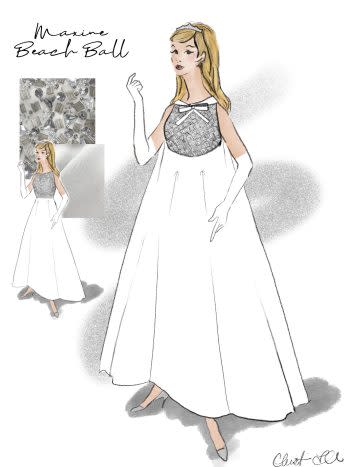
Maxine (Kristen Wiig), the wannabe socialite, was a particularly fun design challenge for Friedberg, as a character learning what is acceptable in that society. “Maxine’s personal style has the kind of aesthetic and optimism of a little girl dressing herself,” she says. “Like a nine-year-old girl with a lot of bows and accessories and perfectly matched shoes and bags—sort of the way you would dress a doll.” Where the other women at the country club would be elegantly styled, Friedberg had to make sure that Maxine’s attire would just slightly miss the mark. “An accessory would be a little too much or too little, or a silhouette would be a little inappropriate for an event.”
As time went on, Maxine strived to emulate the other women, like Evelyn (Allison Janney), though often unsuccessfully. “It was a bit all over the place,” she says. “So, there would be a moment where she would walk in with a silk caftan or a beaded gown that sort of wore her, and then the next event she was back to her old ways. But you definitely see an evolution of her trying desperately to fit in by working on those longer silhouettes and flowing gowns that the other women were wearing.”
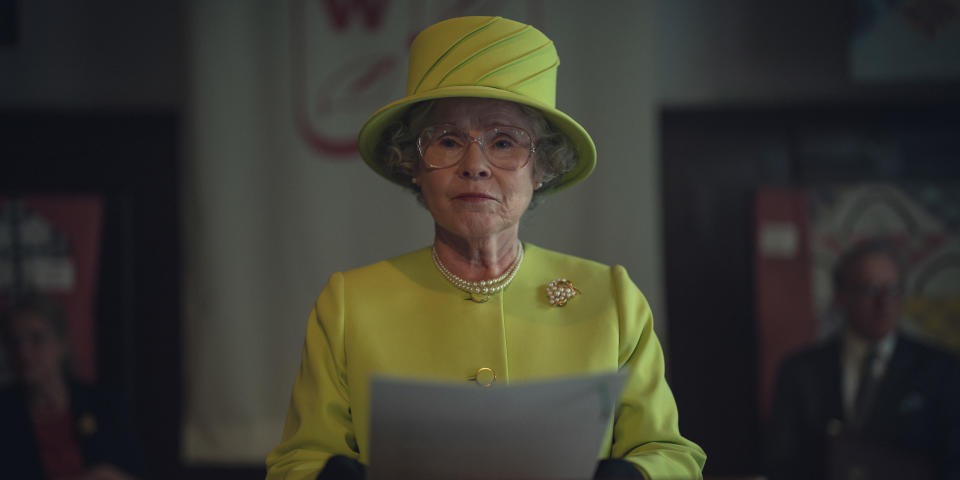
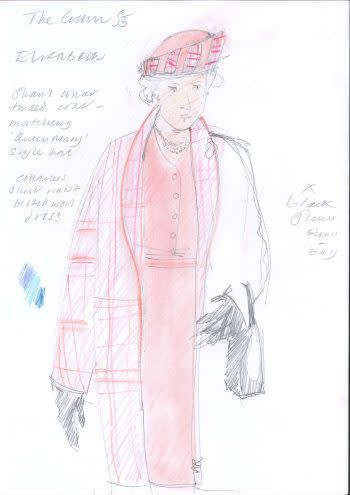
The Crown
As the costume designer for The Crown since Season 3, Amy Roberts notes that there was a definite shift in the work for the final season. “It was different because it was the end, but also because the Queen had died,” she says. “The atmosphere was different, it was almost like making a documentary, which it had never felt like before. Not completely, but there were elements of that.”
Roberts has designed costumes for two actresses playing Queen Elizabeth II—Olivia Colman for Seasons 3 and 4, and Imelda Staunton for Seasons 5 and 6. “With Olivia, she introduced the ’60s and ’70s, and we end with an intimation of her death with Imelda,” she says. The color palette was based on a combination of the era and the story arc. “When we started, it was the ’60s and ’70s, and she had that palette of pastels, with lilacs and peaches.” In what Roberts refers to as the “autumn of her life”, the costumes reflect her journey through the flaws in her marriage as well as the disappointment she feels with her own children’s lives and their divorces.
As Imelda Staunton took over the role however, Roberts brought bolder colors to the outfits to match the clothing she wore in her later years. “She goes out in a big bang like fireworks at the end, doesn’t she?” says Roberts. “That bright green dress when she goes to talk to the Women’s Institute, we called it the ‘tennis ball dress’, that was bright green and mustard and red, it’s almost like a defiance. Even though she’s kind of frailer, and there’s the question of, ‘Is she going to give up the throne to Charles?’ And yet her colors are bolder in a way. There’s almost a ‘to hell with it’ feeling, which I thought was great.”
All three actresses who portrayed the Queen were brought together for the finale, though Roberts says she felt it was more appropriate to not design something new for Claire Foy and Colman. “We chose one of the dresses [Foy] wore with a fairly somber color. With Olivia, we chose a classic, late ’70s suit, but we remodeled it in a more somber color.” Staunton’s white dress, with the coat and hat, was modeled after the Queen’s actual outfit that she wore to Prince Charles III and Camilla Parker Bowles’s wedding, though Roberts says the final outfit worked better than she could have imagined. “The way [director] Steven Daldry worked it and shot it, there was something almost angelic about it, wasn’t it? This white color and having her walk into the light… I don’t think there was a dry eye in the house when we shot that.”
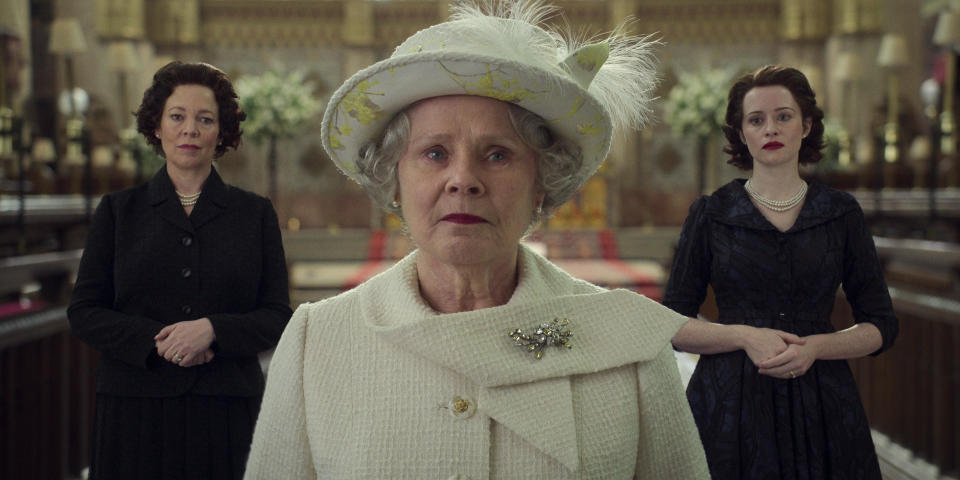
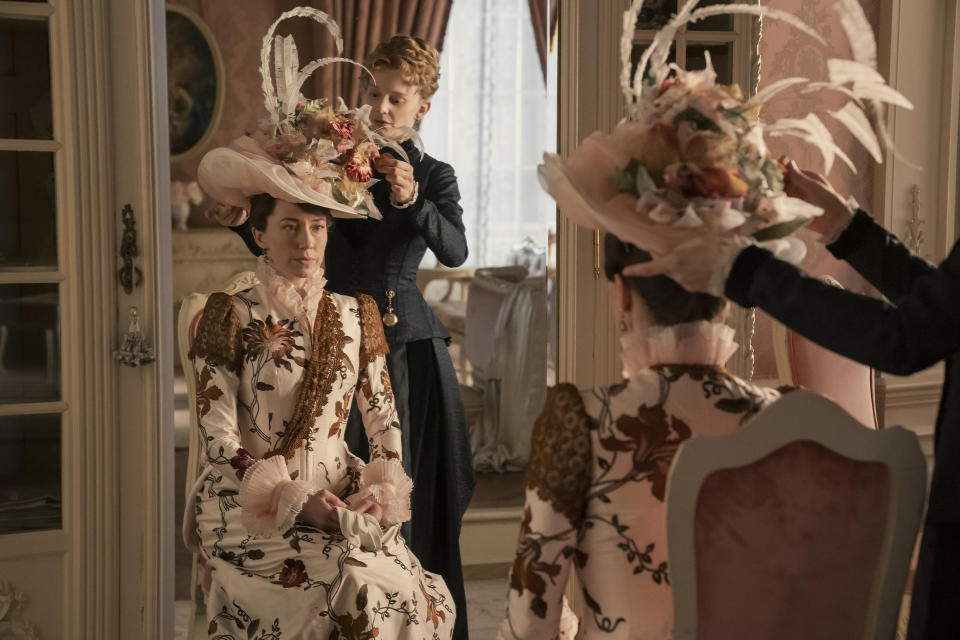
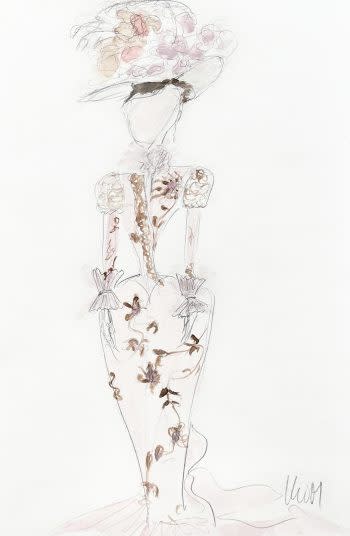
The Gilded Age
In 1880s New York City, every outfit could be seen as a fashion statement. “When ladies stepped out onto the street or showed up at events, it was a permanent fashion show that was displayed continuously in front of the world around them,” says The Gilded Age costume designer Kasia Walicka-Maimone. “In the contemporary world, there’s never just one thing that people respond to. People respond to a variety of styles and influences.”
To set a framework, Walicka-Maimone focused on two extremes on the spectrum for the costumes of higher society—one of a more fashion forward, and one of a more conservative fashion. “Bertha (Carrie Coon) is the most fashion-conscious person who is diving into the newest trends of the European houses,” she says. “She probably goes more toward the 1890s, because that’s where the newest trends come from.”
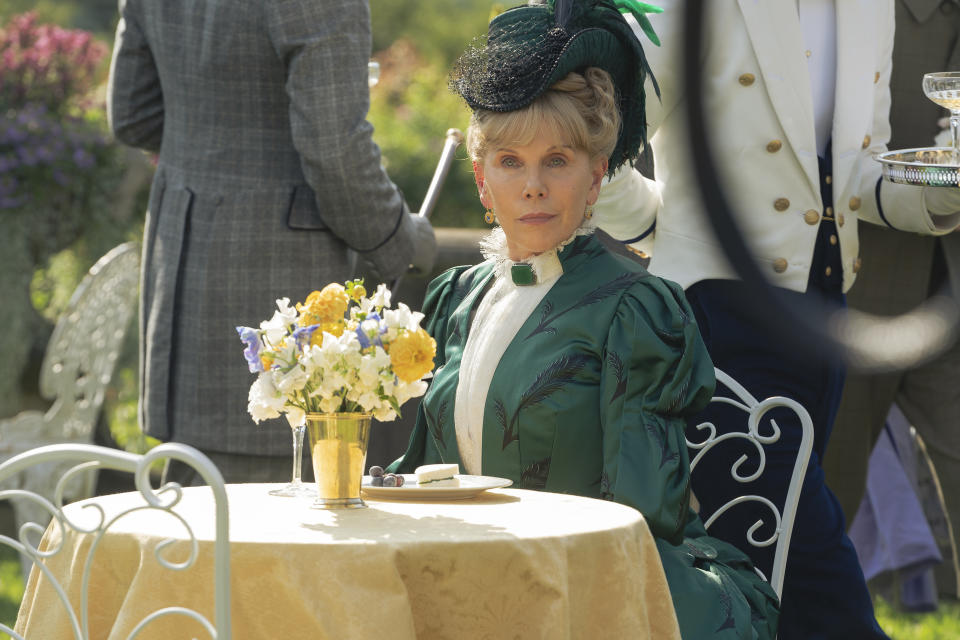
In contrast to Bertha, Agnes (Christine Baranski) is the more conservative character in terms of fashion. “Her styles are more based in the 1880s, when that was the height of her interest in fashion. The period usually covers 10 or 15 years between the newest of the new and the oldest of the old, and then we find the center of what were the most popular styles, to give us the framework of what would influence the oldest people and what would influence the most fashion forward people.”
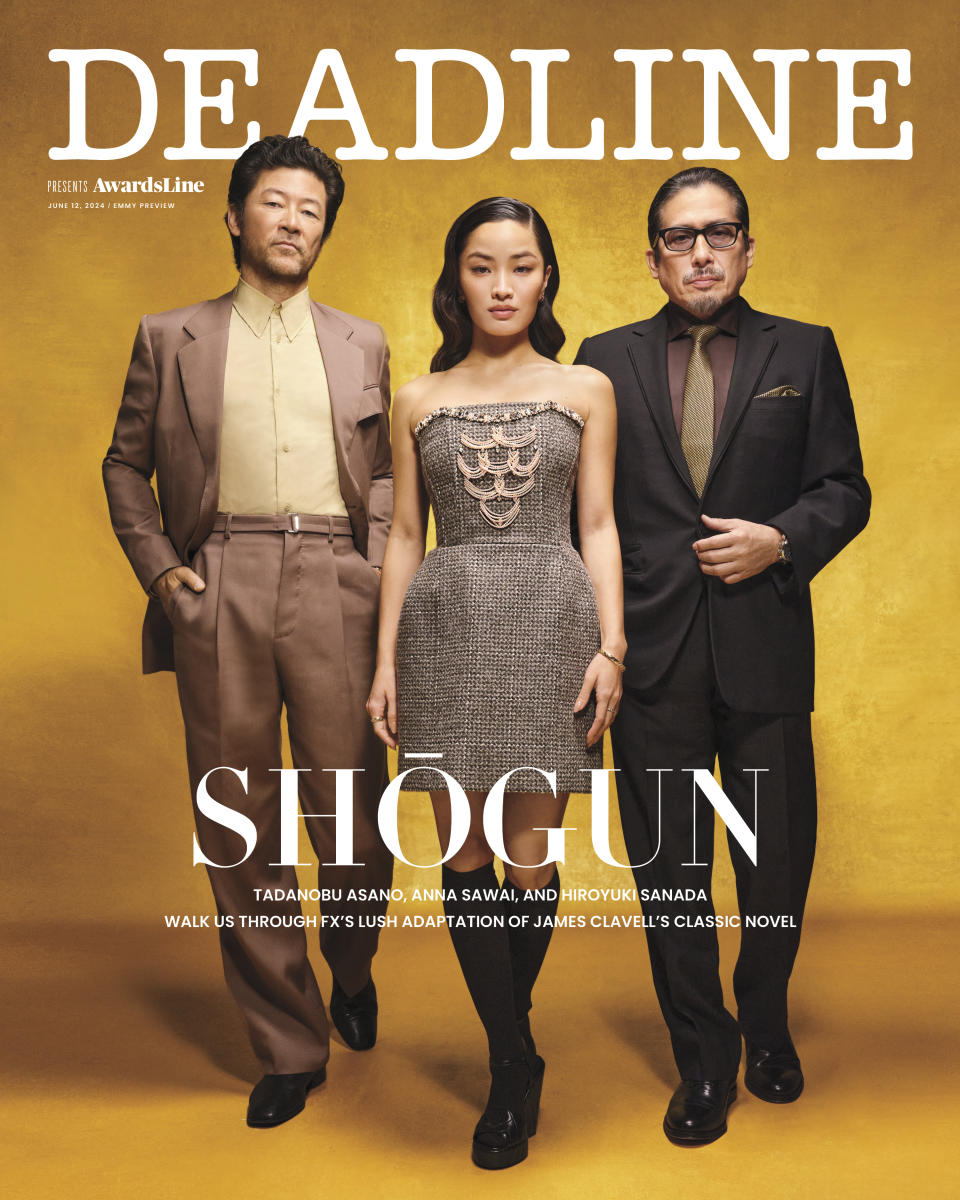
Color palette was an important part of the series, for costume design as well as production design and cinematography. “We all have visceral responses to colors,” she says. “We know what red means; we know what pale-yellow means… But in discovering the period of the 1880s, there was a different color sensibility of paintings from the period that were very much an inspiration for the whole approach to the design and color palette of The Gilded Age, because there was already a certain level of interpretation of the color palette that was not directly driven by reality.”Taking inspiration from painters like John Sargent, James Tissot and Giovanni Boldini, Walicka-Maimone took their use of color as a jumping off point for the color palette of the series. “I can’t quote one, because none of it is a direct representation of the painters, but the aesthetic of the painters from that period influenced the color approach to The Gilded Age.”
Best of Deadline
'House of the Dragon' Season 2 Release Schedule: When Do New Episodes Air?
'The Boys' Season 4 Release Schedule: When Do New Episodes Air?
Sign up for Deadline's Newsletter. For the latest news, follow us on Facebook, Twitter, and Instagram.

 Yahoo Lifestyle
Yahoo Lifestyle 
